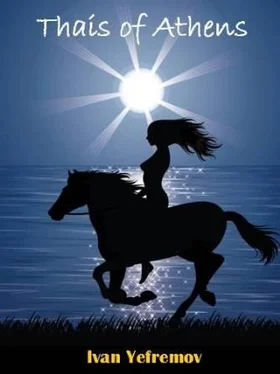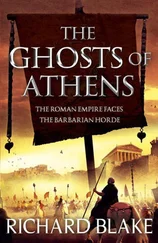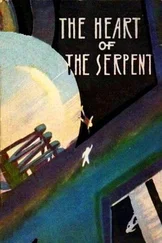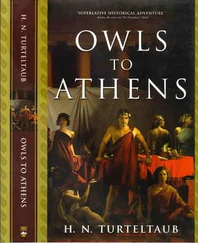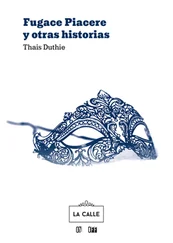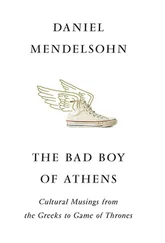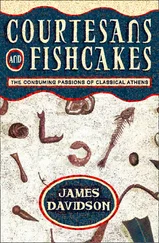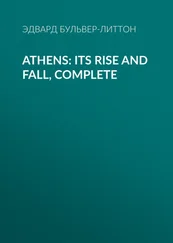Ivan Yefremov - Thais of Athens
Здесь есть возможность читать онлайн «Ivan Yefremov - Thais of Athens» весь текст электронной книги совершенно бесплатно (целиком полную версию без сокращений). В некоторых случаях можно слушать аудио, скачать через торрент в формате fb2 и присутствует краткое содержание. Издательство: Electronic edition, Жанр: Историческая проза, на английском языке. Описание произведения, (предисловие) а так же отзывы посетителей доступны на портале библиотеки ЛибКат.
- Название:Thais of Athens
- Автор:
- Издательство:Electronic edition
- Жанр:
- Год:неизвестен
- ISBN:нет данных
- Рейтинг книги:3 / 5. Голосов: 1
-
Избранное:Добавить в избранное
- Отзывы:
-
Ваша оценка:
- 60
- 1
- 2
- 3
- 4
- 5
Thais of Athens: краткое содержание, описание и аннотация
Предлагаем к чтению аннотацию, описание, краткое содержание или предисловие (зависит от того, что написал сам автор книги «Thais of Athens»). Если вы не нашли необходимую информацию о книге — напишите в комментариях, мы постараемся отыскать её.
Thais of Athens — читать онлайн бесплатно полную книгу (весь текст) целиком
Ниже представлен текст книги, разбитый по страницам. Система сохранения места последней прочитанной страницы, позволяет с удобством читать онлайн бесплатно книгу «Thais of Athens», без необходимости каждый раз заново искать на чём Вы остановились. Поставьте закладку, и сможете в любой момент перейти на страницу, на которой закончили чтение.
Интервал:
Закладка:
“She,” said the sculptor, going back to Thais, “has very strong, deep-set muscles that pull the leg up to the pelvis. Neither the Creto-Helenian or the Nubian women have a single flaw in the line where the leg connects to the pelvis. That is not an accident either. Some people possess this gift of the Kharitas since birth. The outline of Thais’ hips is even more pronounced from exercising the rear muscles that go up: this one in the middle, between the two big ones and some other ones that cannot be felt, but that lift up the layer of the top muscles. They all connect the pelvis and the hip, turn the leg, lift it back and to the side, as well as straighten the body. I would call those muscles “dancing muscles”, and those that press the legs together “riding muscles”.
“Remember, women must develop their deep muscles just as much as the men must develop their surface muscles. Keep that in mind, when you create an image that is beautiful, healthy and harmonious, strong without coarseness, as the daughters of Hellas should be. And not only those of Hellas, but those of the entire Ecumene. Agility without the loss of the power of Eros, and motherhood. That is an ideal and a standard removed as far from Agesander’s Melos statue as it is from the runners and Amazons by Polycleitus.
“A woman is not a delicate youth. She is his opposite, and stronger than him. Women of many nations have dances with undulations of the waist and rocking of the hips. These movements are natural for them, as they exercise the deep-set muscles, create a flexible waist and polish the internal organs of her womb, where a child is conceived and grown. Where such dances do not exist, or where they are forbidden, I have heard childbearing is painful and the offspring are weaker.”
The great sculptor finished his speech and stepped away, pleased. There was applause from his students who had listened intently and now expressed their overwhelming agreement.
Cleophrades rose from his seat and went to stand between Thais and Eris.
“No one could say it more clearly and wisely than you. I want to add only one thing, perhaps because I find Agesander’s Aphrodite to be an interpretation contrary to my own. Look. Here before you stand two beautiful women of different origins. The great Lysippus pointed out immediately how alike they are, as they were created by the gods according to one standard.
“But he forgot to mention one more feature that is important in the definition of beauty. Their breasts sit high, are both wide at the bottom and more rounded than those of Agesander’s model. His Aphrodite, despite the maturity of her body, has slightly sharpened breasts, as those of a young woman, and at the same time their centers are at least one dactyl lower than those of Thais and Eris. That is not a mistake of the artist, but a blind following of the model. Syrian women are often proportioned such.”
“You are right, Cleophrades, I memorized Agesander’s creation less well than you, and I agree with you,” Lysippus replied.
Both the great sculptor of Hellas and his friend, a nearly unknown creator of a few statues of women, would have been saddened if they could see into the future. Then they would discover that thousands of years later the improper representation of the feminine body by Agesander would be mistaken by artists for a true standard of Helenian beauty.
“Do you wish to add something, Leptines?” Lysippus asked.
The Ephesian sculptor nodded, then held out a hand, asking for silence. “You said nothing about the rear portion of the body.”
“There is nothing drastically different there compared to Agesander, or rather to the statue that inspired our debate,” Lysippus said with a frown.
“No. But there is, great master. You yourself spoke about the lowered and flat buttocks of Agesander’s Syrian model. As you can see, our model is sphayropigeon, round-bottomed.” He drew in the air, following Thais’ outline but not daring to touch her.
“Yes, of course. The reason is the same: the development of dancing muscles that bend the body backward and forward. Their greatest convexity is shifted higher and protrudes more, forming a pronounced roundness. The Milos statue is flat in the upper back, and the models of Polycleitus and Cresilaus are flat-backed as well. Looking at those models you can see clearly that they would never excel at dancing balarita or even eumelea. And our guests can perform even the most difficult of dances, is that not so, Thais?”
“Why ask the ‘fourth Kharita’?” Leptines exclaimed, then pointed at Eris. “What about her?”
“Eris, would you please show them something from the Great Mother’s dances?” Thais said. “They need to see.”
“Why?”
“To understand feminine strength and beauty, and to create images of goddesses that would captivate the imaginations of those not fortunate enough to see you in real life.”
“Very well, Mistress.”
Eris pulled out the dagger from her hair and handed it to Thais. Leptines tried to take a closer look at the weapon, but Eris glared at him so savagely that he pulled his hand away. She did however, reluctantly allow Lysippus to take the dagger and the great artist froze at the sight of the ancient treasure.
The narrow blade, made of the hardest black bronze and decorated with parallel golden grooves, was topped by a hilt made of electron in the shape of letter tau of delicate craftsmanship. The top horizontal bar of the hilt was slightly bent and had gryphon heads on each side. It was molded in one piece with the cylindrical handle slightly thicker in the middle, and carved with circular grooves. On the outside, the handle was decorated with three round black agates set between the grooves. Near the blade the handle split in two, hugging the base of the blade with two taloned gryphon paws. The weapon had been created by masters who had died many centuries before. It was worth a great deal of money, but all black priestesses were armed with the identical daggers.
Thais took the blade away from Lysippus, and Eris let out a sigh of relief. Turning toward Thais, she asked her to sing the morning anthem of the Mother of Gods.
“Start slowly, Mistress, and speed up the rhythm after each half-verse.”
“In the early spring I walk among white asphodel flowers,” Thais began. “The sun rises higher, shadow of the night slips away …”
Eris lifted her arms above her head, folding her hands in a peculiar way, with palms turned up. She started slowly bending backwards with her eyes fixed on her chest. When the dark tips of her breasts, as wide as the steppe hills, rose vertically as if pointing at the zenith, Eris turned her head to the right. Tapping the rhythm with her right foot, she started turning right to left, raising and stretching out her leg for balance. The dazzling, almost bluish whites of her eyes were visible in thin strips between her half-closed eyelids, and her mouth formed a menacing, toothy smile.
Thais increased the tempo of the song. Never changing her pose, Eris spun first one way, then the other, switching her feet imperceptibly.
Lysippus pointed at her, obviously pleased. Who else could have done this?
Thais clapped her hands, stopping Eris, who straightened in one movement and froze on the spot.
The fragment of the dance impressed the Indian artists. The eldest of them bowed and held out his arms. Eris hesitated. The man pulled out a jewel which glittered over his forehead in his turban, and held it out to Eris, saying something in his own language. Eris looked at her mistress for direction. Thais glanced at the interpreter.
“Our great master presents the only thing he has of value as a sign of his utmost admiration for the perfection of the soul, body and dance. These are all three components that make a chitrini,” the interpreter said.
Читать дальшеИнтервал:
Закладка:
Похожие книги на «Thais of Athens»
Представляем Вашему вниманию похожие книги на «Thais of Athens» списком для выбора. Мы отобрали схожую по названию и смыслу литературу в надежде предоставить читателям больше вариантов отыскать новые, интересные, ещё непрочитанные произведения.
Обсуждение, отзывы о книге «Thais of Athens» и просто собственные мнения читателей. Оставьте ваши комментарии, напишите, что Вы думаете о произведении, его смысле или главных героях. Укажите что конкретно понравилось, а что нет, и почему Вы так считаете.
